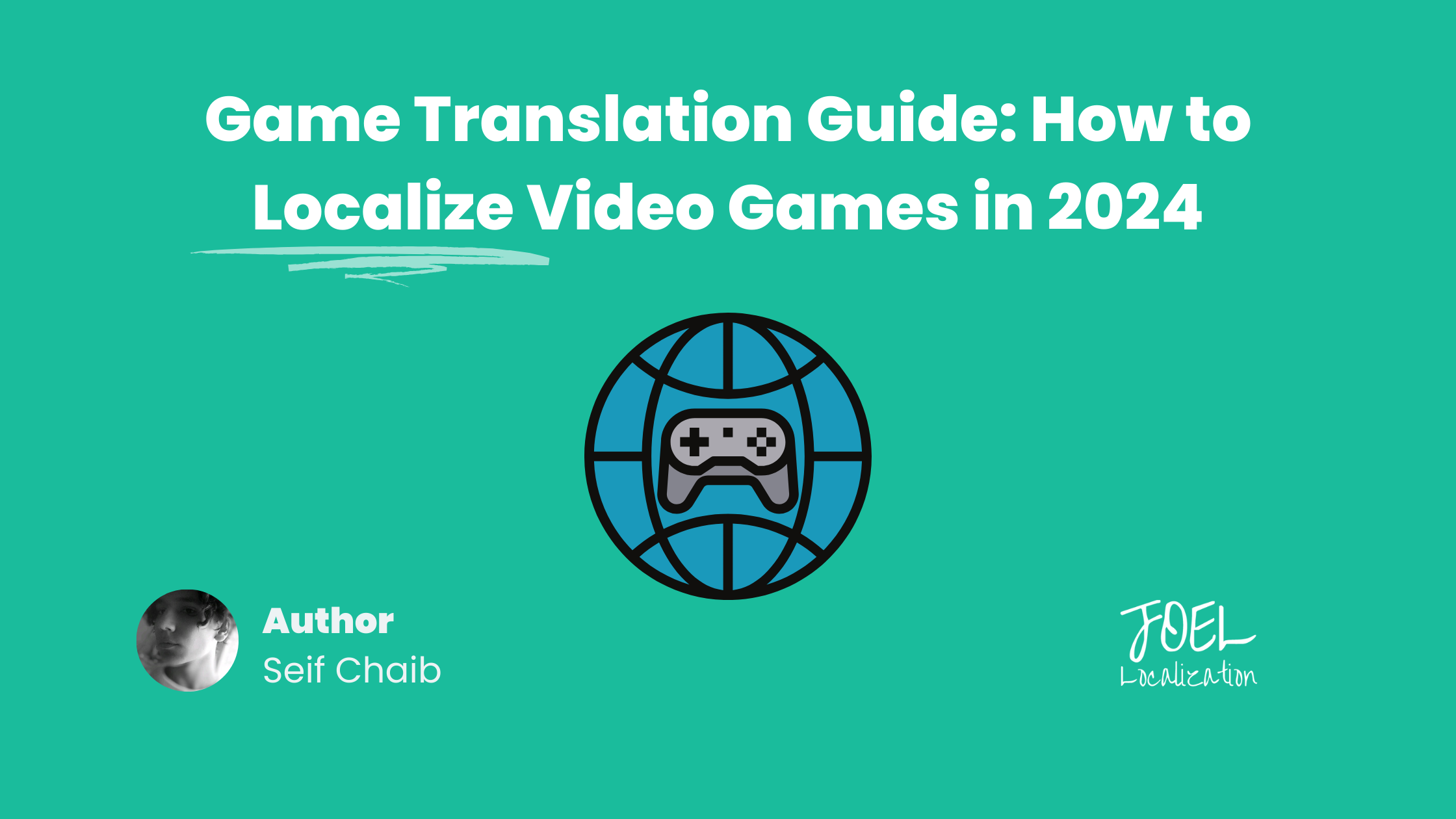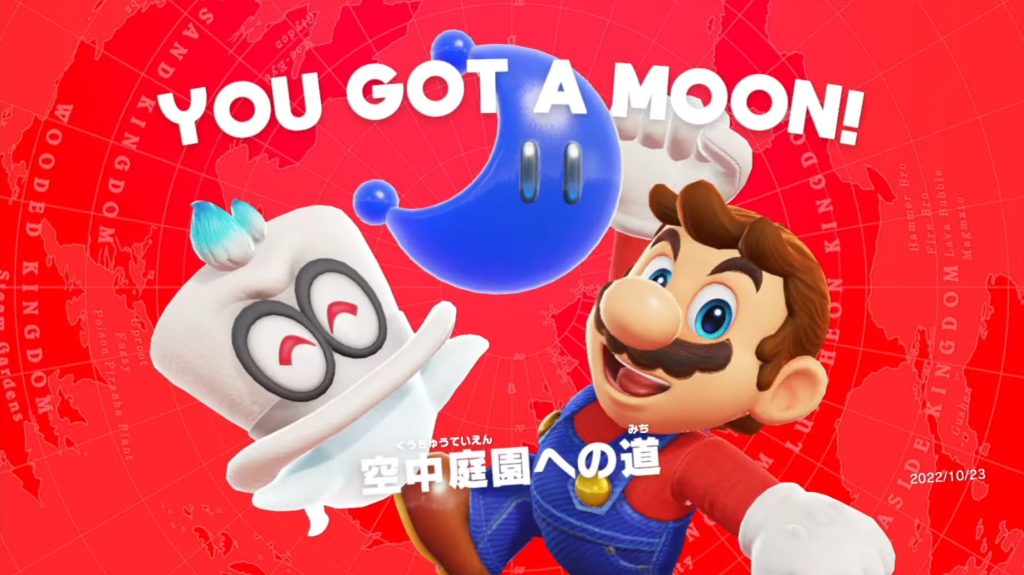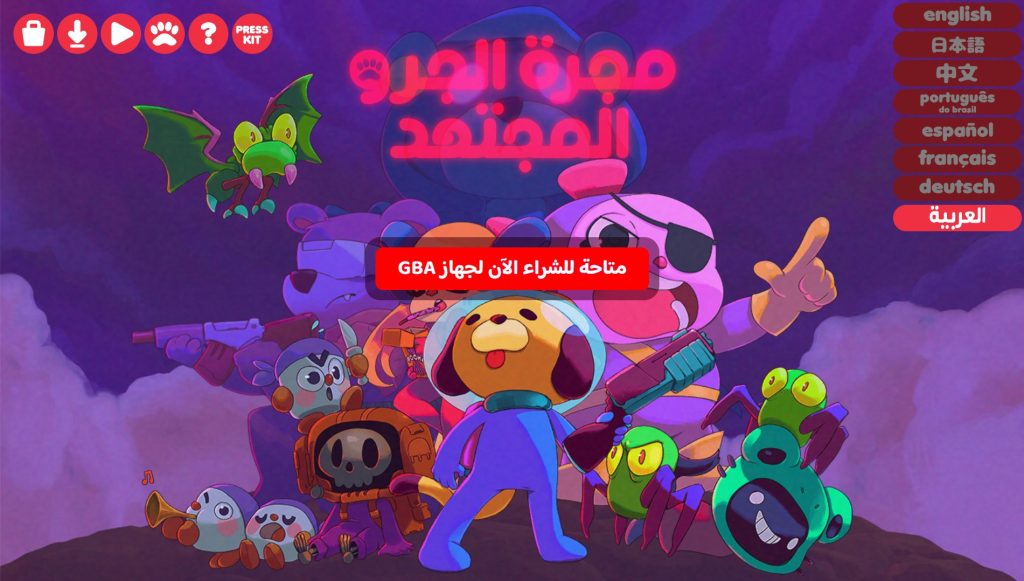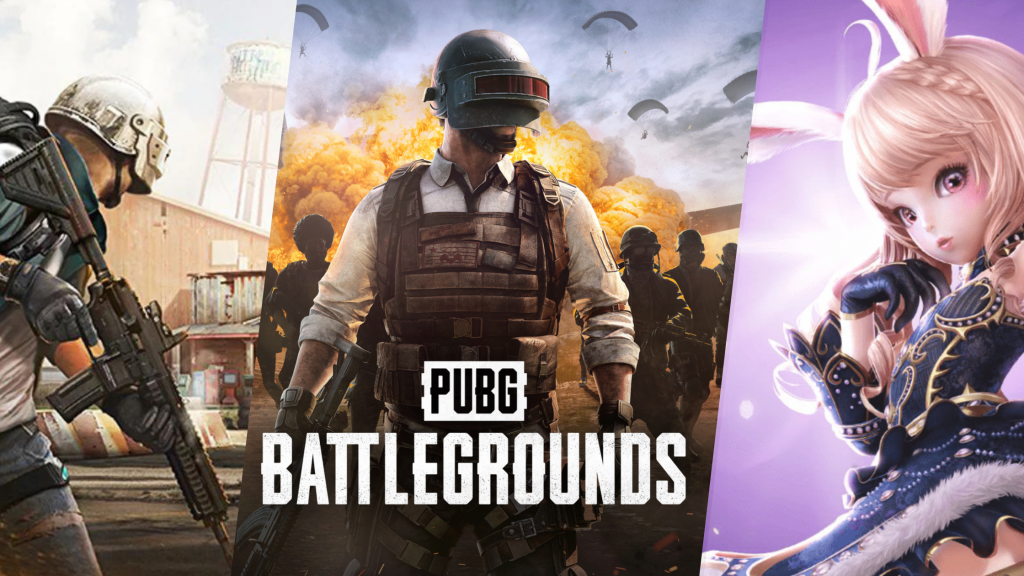
So you want to make your video game available in multiple languages. Great choice! The global video game market is valued at $282.30 billion in 2024, with no signs of slowing down anytime soon.
But, there is only one problem: you don’t know where to start. Well, you’re in the right place! In this guide to game translation, we take you through everything you need to know about how to translate and localize a video game.
First things first. You may have heard the terms “translation” and “localization” thrown around a lot — but what do they actually mean?
Video game localization vs. translation
Contrary to other industries, in entertainment media localization broadly, and in video game localization specifically, the terms “translation” and “localization” are used interchangeably. However…
Translation and localization refer to two different approaches
- Translation refers to the process of converting content from one language to another, focusing primarily on faithfulness to the source and preserving the content’s cultural quirks for the target audience.
- Localization refers to the process of adjusting content made by one culture to be more palatable to another, focusing on smoothing over said cultural quirks and changing the content as much as necessary to suit the target audience.
In most entertainment media sectors including video games, the line is often blurred between these two approaches since effectively entering a new market will always require a mix of both.
Therefore, the real question shouldn’t be “Should I translate or localize my game?” but “How do I adapt my game?“
How should you adapt your game?
Now that we’re asking the right question, it’s time to look for the answer. Though, that may not be as simple as it first seems…
The answer is a bit anticlimactic — there’s no single answer.
Each and every case is unique and influenced by a lot of variables. It’s complex, confusing, and a little messy. But don’t you worry! We’re here to help.
Key game adaptation factors
- Player Expectations: Audience in one region may be used to more direct translations, and as a result, averse to content that feels “over localized” to their palate. The exact opposite may be true for another region. Assessing how your game should be adapted, and to which direction its process should skew (translation or localization), is essential.
- Cultural Context: Some regions will be very culturally close, or culturally influenced, by the region where your game was created. Others on the other hand will be completely unique, leading to innocuous content in one region being interpreted as culturally crude, shocking, or offensive in another. Your localization process should be culturally aware, respectful, and fluid, as every region has to be approached differently.
Luckily, determining the right approach isn’t the client’s responsibility. A great localization partner should always one step ahead of these variables—defusing localization landmines proactively.
The experts you hire should already know the market you’re targeting, its sensibilities, norms, and Dos and Don’ts, and operate within a deliberate localization process tailored for your game and its target audience while keeping you in the loop about potential challenges.
What parts of the game should be localized?
In-game content

In-game content (menus, tutorials, dialogue, settings, and anything in-between) should be fully localized for most regions. This is a near universal rule, as partial localizations are viewed as incomplete and/or unprofessional to the extent that they may be lumped in with hobbyist projects regardless of their quality or the reasons behind that choice.
However, while the practice of localizing some in-game partially is almost nonexistent, it still exist — and is very popular — in some regions.
Japan is the most prominent example of the unique cases where culture, precedent, and player expectations shaped how video games are localized. Japanese players grew up with some degree of English constantly present in their games (even in non-localized Japanese games!) so the absence of English, or its replacement with translations they may view as “awkward”, could turn them off.
It’s safe to say that the practice of partial localization is extremely rare, so you can work under the assumption that your in-game content will be completely localized for most markets. But you should always double check and ask your localization partner about their region’s norms.
Out-of-game content

Unlike in-game content, which is mostly cut and dry in how it should be approached, game related (often external) content can be localized completely or partially to the extent of the project’s needs.
Related content may include, but is not limited to:
- Promotional material (trailers, packaging/digital store descriptions, website, press kits): Your game may already be well known in the target market and need little promotion, or may need the full promotional suite for players to even know that it’s releasing in their language. Whichever bracket your game falls under, localizing the Packaging, Store pages, and its Press kit is always the strict minimum.
- Supplemental material (strategy guide, interviews, wiki): For smaller releases, or releases made by independent developers, localizing supplemental material can be safely skipped.
- Social comms (community forum, support, social media posts): As with supplemental material, localizing social comms can be safely skipped for smaller and indie releases. However, providing localized support channels should not be skipped for mid to big sized releases, especially live service/multiplayer games.
- Legal material (Terms of Service, Privacy Policies): Localizing any legal material included in or related to your game is a must, as leaving them in a foreign language may incur financial losses or legal penalties.
What languages are worth localizing your game into?
English
Assuming your game wasn’t written in English, it’s the first language you should target.
English is the lingua franca of players and a shared second/third language for many around the globe. English alone has more reach and covers more ground than any other individual language you could localize your game into.
While you should definitely not depend on English to reach all regions, the presence of English as a fallback for players whom you haven’t included their languages is always a plus.
FIGS (French, Italian, German, and Spanish)
A safe bet when considering what additional languages to localize your game into would be covering the FIGS group of languages then adding other languages depending on market research and player demand.
FIGS in an acronym for French, Italian, German, and Spanish (European & Latin American). Since it covers the breadth of Europe, FIGS has dominated the game localization industry for decades as the most present combo of languages due to its combined market share.
CJK (Chinese, Japanese, and Korean)
Demand for the CJK group of languages has been steadily rising in the last two decades, and they’re shaping up to rival FIGS languages as a game localization mainstay soon.
CJK in an acronym for Chinese (Simplified & Traditional), Japanese, and Korean. CJK represents the most popular combo of Asian languages with flourishing gaming markets.
Additional languages
Aside from the expected frontrunners, languages such as Arabic, Brazilian Portuguese, Russian, Ukrainian, and Polish, alongside niche languages from smaller emerging markets, are gradually cementing their place in language selection screens.
Covering these languages may not always be the most sensible financial choice according to your market research, but it could result in unexpected success—and at worst, show players from under supported regions that you truly care.
What is the translation cost for a video game in 2024?
Game translation costs are variable
Video game translation costs can vary drastically depending on the region, vendor, and the level of involvement preferred by the client.
- Translation agencies, also referred to as language service providers, will charge more on account that they handle the entirety of the process from recruiting and communication to management. This makes them ideal for AA to AAA developers and publishers who already have many moving parts to keep track of.
- Freelance translators will charge less with the caveat that developers and publishers will have to manage their own localization staff with all the responsibilities that entails. As a result, they’re a good tradeoff for indie developers on a budget.
Best examples of localized games
Nintendo Games

What makes Nintendo localizations special is that they don’t feel like localizations, which is counterintuitively exactly what you want from a localization.
Get someone who doesn’t play much to try a first party Nintendo title, and it would be difficult to convince them that it was originally written in Japanese.
Everything Nintendo makes, from their flagship series like The Legend of Zelda and Mario, to their more recent breakout hits like Xenoblade and Splatoon, is meticulously adapted and localized to feel natural and native to each target language.
Key to this is Nintendo’s excellent in-house localization team and strategy, guaranteeing quality even when outsourcing their localizations to external language service providers.
Square Enix Games

Admittedly, this beloved JRPG powerhouse’s localization efforts started off a bit shaky, and stayed so into the late nineties. But once they got a foothold, they never let it go.
Square’s approach to localizing their titles usually doesn’t deviate from the norm, but that isn’t to say that the results aren’t great—Dragon Quest’s history of amazing localizations speaks for itself.
But gears shift when it’s time to localize a new Final Fantasy, their blockbuster series. Here, no expense is spared, and no corners are cut. And the result speaks for itself.
While the localization process usually waits until a game’s script is finalized, Square has been localizing their recent Final Fantasy games into English as they’re being made—essentially developing two parallel scripts instead of waiting for the source to be finished then translating it.
Regular localization is extremely complex as-is, so one can only imagine the effort and coordination that goes into simultaneous localizations like these.
Similarly to Nintendo, this effort is led by Square’s in-house localization team and based on years of experience and trial and error.
KRAFTON Games

JOEL Localization is KRAFTON’s long-term localization provider, so we’d be hard-pressed not to mention the company when listing examples of great localized games.
KRAFTON, a South Korean video game publisher known for the hit game PUBG, excels in making their games feel at home in every country. This is evident from their results — with 75 million versions sold before they switched to F2P, PUBG is the fifth best-selling video game of all time.
Leverage a combination of in-house translators, in-country reviewers, language service providers (cough including us cough), and a wide range of localization tools and technology, they’ve mastered the art of ensuring their games are loved by players all over the world.
Best practices for translating video games
As we established, video game localization stands out from other localization fields due to its multifaceted complexity.
Localizing games is a constant balance between fulfilling market demands, side-stepping technical challenges, and preserving the artistic vision of the original creators—a balance only achieved when you venture into it prepared.
1. Develop with localization in mind
Video games are often developed monolingually with localization either being an afterthought, or on the bottom of the studio’s todo list. Come time for localization, and it’s a nightmare.
Every development team should look into the potential challenges and pitfalls of localization early on and work with them in mind.
2. Create a localization Kit
A localization kit, similarly to a press kit, is a collection of files and documents meant to familiarize your translators with your game.
Video game localization kits contain content ranging from character bios, gameplay info, target audience and age rating specifications, to full-on style guides, lore bibles and previous translations to be used as reference for long running series.
Preparing a well rounded localization kit before venturing into your localization effort is essential to its success!
3. Choose the right localization partner
And perhaps most importantly, venture into localization with a partner you can trust.
In this intricate dance, choosing the right partner can make or break your efforts. Working with a partner that knows in the ins and outs of this industry will set you up for success.
It’s dangerous to go alone!
Take JOEL Localization with you and navigate the challenges of game localization with ease. Join the ranks of famous game publishers like KRAFTON in trusting us with bringing your game to global audiences. We’d love to have you onboard, so reach out for a quote here.
